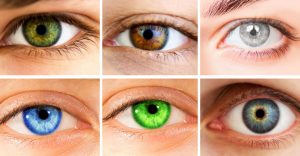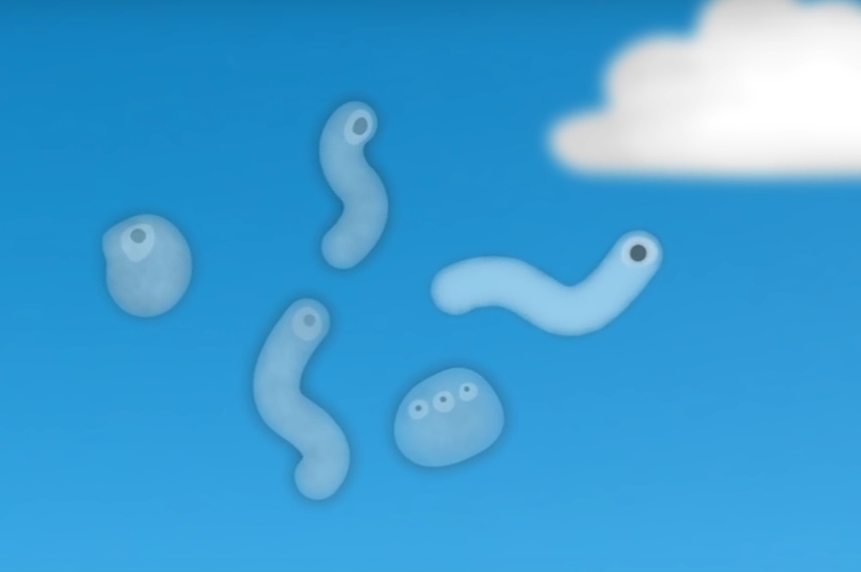I Never Thought I Was Colorblind. Then After I Took This Test It Said I Was! Now It’s Your Turn!
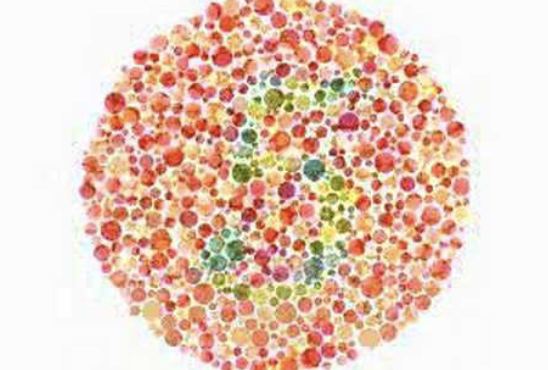
image via – youtube.com
It’s fun taking this online test for color blindness. Don’t worry if you have trouble seeing the imbedded numbers in the following video, because it may have to do with the lighting on your computer. In any case, inability to make out differences in color is not actually a form of blindness, even though it is called color blindness.
Rather, it is a deficiency in discriminating between certain colors; red and green, and blue and yellow. There is a genetic component to color blindness, but it can also result from certain drugs, toxins and eye diseases. (reference, arlingtoneyes.com)
Color blindness is easy to detect with these imbedded numbers in colored dots, or with shapes for young children. It is not inconsequential to know if you are colorblind. For children, in particular, it can inhibit learning if certain lessons aren’t tailored for the deficiency. For adults, who have made certain career choices where not being able to differentiate color impacts their job duties, not knowing you have color blindness might be dangerous.
The following video offers what is called the Ishihara color test. Go ahead and try it out. If you have trouble discerning the embedded numbers, it might be worthwhile seeing an ophthalmologist, but again no reason to worry. Let us know how you do.
Did the test say you are colorblind? Let us know!
Please SHARE With Family and Friends
She Rubs Baking Soda Under Her Eyes For 5 Minutes 3x Per Week. The End Result Is STUNNING!
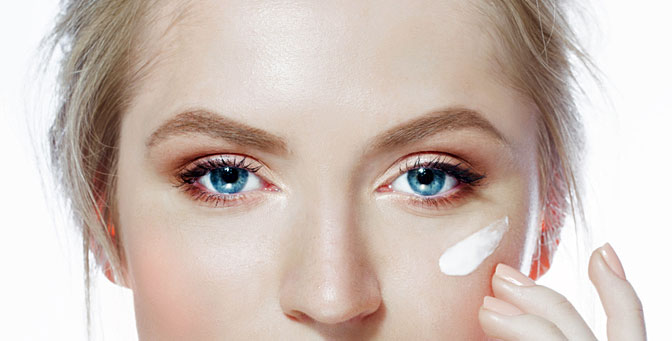
I really don’t know anyone who hasn’t woken up with that awful puffiness under their eyes, that can sometimes takes many hours to go away. This is unbelievably frustrating and unsightly when you have to be somewhere important in the morning!

It turns out there is an easy remedy, probably sitting right there in your kitchen, that will work wonders to rapidly “de-puff” your swollen eyes…BAKING SODA! According to “All About Vision” baking soda is safe for use near your eyes, and will quickly help you to walk out the door looking fresh and rested.

Baking soda, otherwise known as sodium bicarbonate, contains sodium, hydrogen and carbon. One teaspoon of baking soda has about 1,000 milligrams of sodium; it is this high level of sodium that is the key to reducing swelling around the eyes. Because water follows sodium, it enables the water to be drawn back into your body, thus reducing the external swelling, according to “LiveStrong”.

The video below, contains an easy-to-follow tutorial for making the baking soda mixture and appropriately applying it to your swollen areas under your eyes, for a quick remedy for reducing your puffiness and going on with your day.

Please SHARE this USEFUL DIY with your friends and family
This Guy Went Blind Because He Made A Simple Mistake Many People Make Every Night!

Contact lenses are a hugely popular alternative to wearing eyeglasses. Most people wear them in order to see better and to correct their vision. However, countless others choose to wear colored contacts to change up their eye color or to achieve a certain look. The CDC estimates that in the United States more than 30 million people wear contacts, which are considered medical devices and are regulated by the FDA (cdc.gov/contactlenses).
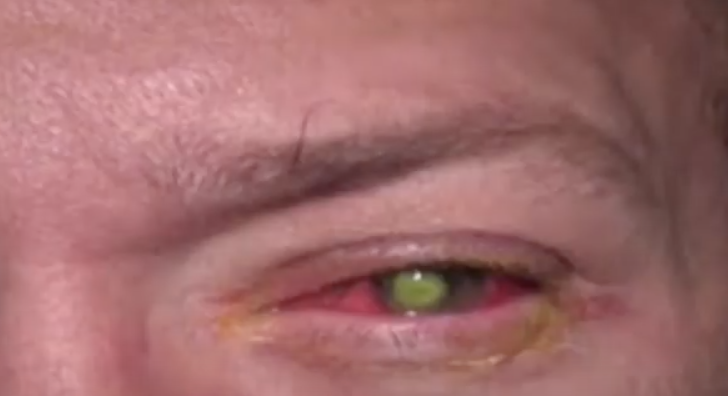
When a person goes to apply the tiny, thin, round, clear plastic lenses, they place them directly onto the surface of their eye. This application method requires users to have clean hands and sanitary conditions around the lenses since bacteria, dirt, and any other contaminants can easily be transferred to the eye when putting them in or taking them out.

It’s common knowledge among contact users that you should always take them out before bed and never wear them overnight. Failing to do so puts you at a risk for infection, irritation, and even blindness. It’s simply a risk no one should take, but sometimes people forget or brush it off and leave them in anyways.

Also, some “extended wear” contacts are labeled as safe to leave in for multiple days at a time. Those were the type of contacts Chad Groeschen had been wearing for several days when he started to lose vision in his left eye.

At first Chad’s eye was itchy and watery so he assumed it was allergies acting up. But when he awoke one night with a massive headache, sinus pressure, and cloudy vision, he decided to get medical attention. Doctors checked out his eyes and told him that Pseudomonas bacteria had built up under his contact and damaged his eye.
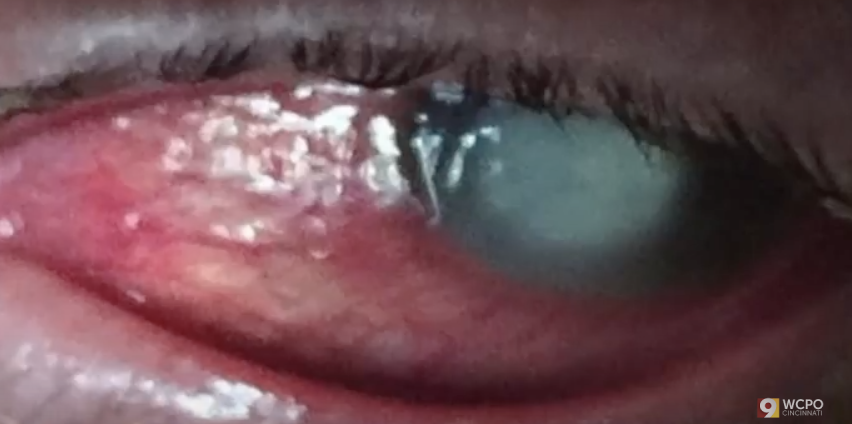
This type of bacteria is most commonly found in the eyes of people who wear or leave in contacts for extended periods of time and if left untreated it can cause blindness. Doctors were able to halt and control the infection in Chad’s eye, but it had progressed too far and he ended up becoming blind in his left eye.

Chad is currently waiting for the open sores in his eye to heal to see if he may qualify for a corneal transplant. Such an operation could potentially restore some of the vision he has lost, but only time will tell. He’s decided to use his story and experience as a way to warn and remind others of the dangers and risks associated with leaving in contact lenses for too long.

Even if the packaging claims it is safe to do so, don’t jeopardize your health and eyesight. Take the lenses out, clean them, give your eyes a break, and if you notice changes or irritation in your eye have it checked out immediately.
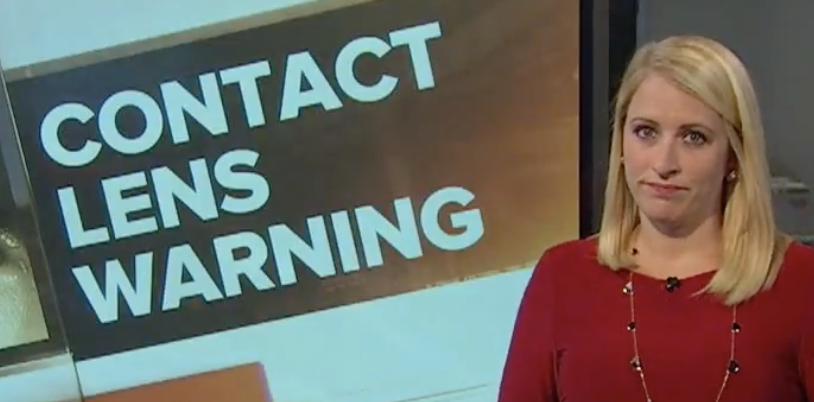
Please Share This With Family and Friends
Choose An Eye And See What It Reveals About You
It has often been said that “the eyes are the windows to the soul” in that they can reveal all sorts of things about a person. Think about it, when you gaze into someone’s eyes you can tell if they are happy, upset, mad, sad, indifferent, or whatever emotions they may be feeling at the moment. Our eyes are capable of conveying unspoken messages and even if we try to hide certain things, our eyes can end up betraying us.
There are also many different types of eyes that extend beyond the physical ones on our bodies, from the evil eye to the third eye, the seeing eye, the invisible eye, and the mind’s eye. These concepts are all linked to our subconscious awareness and they’re believed to give us extra-sensory abilities that extend beyond what our ordinary eyes are capable of perceiving.
Depending on what you believe and how you view the world, the eyes can mean many things, and it all varies from person to person. They are part of what makes us unique and they affect how we perceive the world around us. They also play a major role in our decision making and the choices we choose can offer further insight into who we are deep down inside. As basic and simple as making choices may seem, the reasons behind them are more involved and complex than you’d imagine. Life experiences, our past, our preferences, emotions, and countless other variables come into play.
This short visual quiz combines eye types with the choice you make to explore and reveal things about you and your personality that you may or may not be aware of. Tests such as this one are specially designed to uncover aspects of a person’s character, so try it out! All that you need to do is pick the one eye image that you are most drawn to and that is most appealing. Have fun, enjoy, and see if you agree with what your eye choice says!
Please Share This With Family and Friends To See What Eye They Pick!
This Is What Those Strange Floaty Things In Your Eyes Actually Are!
If you have ever seen what looks like little bugs in the periphery of your vision, that in fact are not bugs at all, you probably have experienced “floaters”. The scientific name for this phenomenon is know as “muscae volitantes” or “flying flies”.
This occurs when red blood cells, proteins or tissue have detached, and cast shadows on the retina. Whatever the tiny object that is casting this shadow, these “floaters” are not dangerous, and in fact are often not visible. They become more visible when they move closer to the retina, and when you are looking at a bright surface. The reason why they often go unnoticed, is because the brain has the power to accommodate for these annoying objects, and thus are not seen.
When they are seen, they drift with your eye movement, floating in and out of your line of vision. The first time you experience this, you probably will find yourself swatting at annoying little bugs until you realize that what you are experiencing is within your eye. Fortunately, these floating objects are pulled down by gravity, out of the line of your vision.
The video you are about to watch is a TED-Ed production that does a great job of explaining this phenomenon in more depth, and holds important information related to the health of your eye. It is well worth watching to further understand the phenomenon of “floaters” that we all will eventually experience.
Please SHARE this with your friends and family on Facebook

